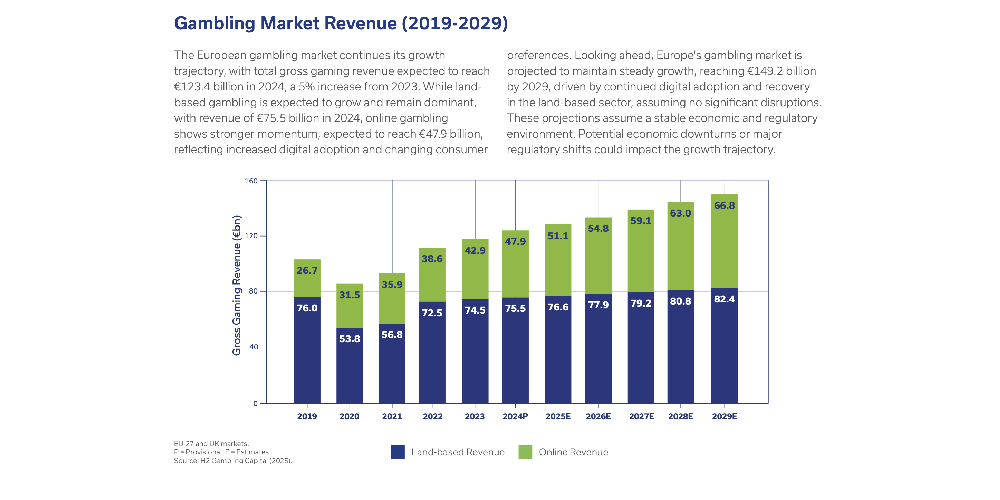In March, Nevada gaming revenue experienced another decline, resulting in a decline in strip leads.
In March, Nevada gaming revenue experienced another decline, resulting in a decline in strip leads.
The Nevada Gaming Control Board's data, which was released on Tuesday, indicates that a 5% decline in revenue for the Las Vegas Strip contributed to a statewide decline in March.
In March, the state's aggregate gaming revenue was $1.27 billion, representing a 1.1% decline from the previous year. Nevada gaming has experienced a 1.14% decline from the previous year, a record for the Silver State, in the current fiscal year.
The gross gaming revenue (GGR) of the Las Vegas Strip for the month was $681.7 million, a 5% decrease from the previous year. The Strip has experienced year-over-year declines in seven of the last eight months, with the exception of January. Gaming revenue in the gaming capital of the United States has decreased by 3.35% as we approach the final quarter of the fiscal year.
The Boulder Strip ($86.3 million, +10.2%) and downtown Las Vegas ($85 million, +11.5%) contributed to Clark County's aggregate decline of only 1.75%, despite the Strip's decline. The Las Vegas residents market experienced a decline in revenue last month ($162.8 million, -2.5%); however, it has still increased by 6% year-to-date, with a total of over $1.4 billion in gross revenue.
The ancillary markets have been successful in the southern half of the state, as the Strip is unable to replicate its record-breaking performance from previous years. Downtown, the locals market, and Mesquite are all experiencing superior fiscal years in comparison to the northern sectors of Nevada.
The results of Baccarat remain subpar.
Baccarat was a contributing factor to the Strip's decline in March, and the game's performance generally corresponds with the market as a whole. The Strip's baccarat GGR in March was $73.3 million, a decrease of over 34% year-over-year.
The game's GGR is down 3.5% year-over-year for the first quarter of the year. However, when the previous 12 months are considered, the figure decreases to -15.6%. Table game performance on the Strip has been unfavourable, with the exception of baccarat.
Strip table game gross revenue decreased by 16.6% to $262 million in March. The sector has experienced a decline of over 3% for the quarter and over 7% in the previous year.
Reno is the leader in the north.
The northern Nevada markets were largely forgettable in March, with the exception of Reno. The Biggest Little City experienced a 10% year-over-year increase, resulting in a total of $57.6 million. Reno is the most successful significant northern market, with a 1.3% increase in gross revenue for the fiscal year, totalling $573.5 million.
Reno experienced an exceptional month for table gaming ($10.2 million, +12.3%) in contrast to the Strip. The market's slot GGR of $47.4 million also increased by over 10%.
The majority of other significant markets in the northern region experienced a decline, including Sparks ($14.9 million, -2%) and South Lake Tahoe ($14.7 million, -7%). Wendover, the second-highest-grossing northern sector after Reno, maintained a steady $25 million in revenue for the month.
March Madness generates substantial profits for sports wagers.
The entire industry was disappointed with the results of this year's March Madness, as the industry's favourites emerged victorious. For the first time since 2008, all four No. 1 seeds advanced to the Final Four. Florida ultimately defeated Houston to secure the national championship.
Nevada's statewide sports wagering gross revenue decreased by over 25% year-over-year to $22.2 million. $15.5 million of that was attributed to mobile wagering, which represents a 40% decrease. Basketball wagering specifically experienced a 24% decline, with a total of $24.5 million.
The Strip experienced a marginally improved performance, with a decline of only 16.6% to $7.5 million. Basketball results were comparable to those of the state as a whole, with a 20% decrease to $10.6 million.
Visitation is declining amid persistent concerns regarding the ongoing trade war and recession.
The revenue results for Las Vegas (and Nevada as a whole) may be less alarming than the decrease in visitation. In a city and state that are economically dependent on tourism, there is a significant concern regarding the potential disruption of international travel as a result of the escalating trade conflicts and the potential for a subsequent recession.
Total visitor volume in March was 3.38 million, a nearly 8% decrease year-over-year, as indicated by the most recent data from the Las Vegas Convention and Visitors Authority. This occurred despite a 10% increase in convention travel and daily accommodation rate increases on the Strip (3.9%) and the city as a whole (3.1%).
Harry Reid International Airport experienced a 4% decrease in year-over-year passenger traffic, with a total of 4.84 million passengers. The daily volume of automobile traffic from all highways was 135,402, which represents a 2% increase.







